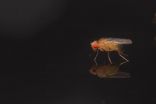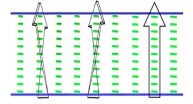Baby cries show evidence of cocaine exposure during pregnancy
The cries of babies whose mothers used cocaine during pregnancy have increased amounts of 'hyperphonation,' a new study finds
2014-10-22
(Press-News.org) A new study conducted by University of North Carolina School of Medicine researchers provides the first known evidence of how a similar acoustic characteristic in the cry sounds of human infants and rat pups may be used to detect the harmful effects of prenatal cocaine exposure on nervous system development.
"These findings are important because studies of prenatal drug exposure in humans are always limited by not knowing if infant nervous system damage was due to the effects of a specific drug, such as cocaine, or the effects of other associated factors, such as maternal depression, poor prenatal care and other drug use, that are often linked with maternal drug use during pregnancy," said Philip Sanford Zeskind, PhD, lead author of the study published October 22 in the journal PLOS ONE.
"The discovery of the similar spectral characteristic in rat pup vocalizations will allow for translational analyses that can be used to detect the isolated effects of cocaine or similar drugs on brain limbic mechanisms common to humans, rodents and other mammals," said Zeskind, a researcher at Levine Children's Hospital at Carolinas Medical Center in Charlotte, North Carolina and a research professor of psychology and pediatrics at UNC.
The study was conducted as part of the Cocaine Affects Mother-Infant Dyads (CAMID) research initiative. The CAMID project's principal investigator, Josephine M. Johns, PhD, professor of psychiatry and psychology at UNC, is a senior author of the PLOS ONE paper. The CAMID research group focuses on how drug abuse affects the mother infant dyad on multiple levels. The work is funded in part by the National Institute on Drug Abuse and the National Institute of Mental Health.
Previous work by Zeskind and others has shown how a high-pitched spectral characteristic of the infant's cry sound called "hyperphonation" may show that a newborn infant has suffered nervous system damage due to prenatal drug exposures – even when the baby otherwise appears to be perfectly healthy by traditional pediatric examinations.
In addition to finding increased amounts of hyperphonation in the cries of human infants whose mothers used cocaine during pregnancy, the UNC researchers found a little known spectral characteristic, which is similar in pitch and acoustic structure to hyperphonation, to be in the ultrasonic vocalizations of rat pups that were treated with prenatal cocaine exposure. This paper is one of the first translational findings of similar drug exposure effects in human and rodent subjects and highlights the CAMID research efforts to bring basic laboratory and clinical research closer together to more quickly find target clinical interventions.
INFORMATION:
ELSE PRESS RELEASES FROM THIS DATE:
2014-10-22
Bright colours appear on a fruit fly's transparent wings against a dark background as a result of light refraction. Researchers from Lund University in Sweden have now demonstrated that females choose a mate based on the males' hidden wing colours.
"Our experiment shows that this newly-discovered trait is important in female choice in fruit flies, and is the first evidence that wing interference patterns have a biological signalling function between the sexes during sexual selection", said Jessica Abbott, a biologist at Lund University.
The extremely thin wings of the ...
2014-10-22
Following the study of a hospital that logged more than 2.5 million patient monitoring alarms in just one month, researchers at UC San Francisco have, for the first time, comprehensively defined the detailed causes as well as potential solutions for the widespread issue of alarm fatigue in hospitals.
Their study is in the Oct. 22 issue of PLOS ONE and available online.
The issue of alarm fatigue has become so significant that The Joint Commission, a national organization that accredits hospitals, named it a National Patient Safety Goal. This goal requires hospitals ...
2014-10-22
WASHINGTON, Oct. 22, 2014—At first glance, the static, greyscale display created by a group of researchers from the Hong Kong University of Science and Technology, China might not catch the eye of a thoughtful consumer in a market saturated with flashy, colorful electronics. But a closer look at the specs could change that: the ultra-thin LCD screen described today in a paper in The Optical Society's (OSA) journal Optics Letters is capable of holding three-dimensional images without a power source, making it a compact, energy-efficient way to display visual information.
Liquid ...
2014-10-22
Tropical Depression Nine formed over the western Bay of Campeche, Gulf of Mexico and is forecast to make a quick landfall on Mexico's Yucatan Peninsula. NOAA's GOES-East Satellite captured the birth of the depression.
NOAA's GOES-East Satellite captured an image of the birth of Tropical Depression 9 on Oct. 22 at 1600 UTC (12 p.m. EDT) in the western Bay of Campeche. The clouds associated with the depression stretched over the Yucatan Peninsula and into the western Caribbean Sea.
On Oct. 22, a Tropical Storm Warning was in effect from Celestun to Frontera, Mexico. The ...
2014-10-22
Beta Pictoris is a young star located about 63 light-years from the Sun. It is only about 20 million years old and is surrounded by a huge disc of material — a very active young planetary system where gas and dust are produced by the evaporation of comets and the collisions of asteroids.
Flavien Kiefer (IAP/CNRS/UPMC), lead author of the new study sets the scene: "Beta Pictoris is a very exciting target! The detailed observations of its exocomets give us clues to help understand what processes occur in this kind of young planetary system."
For almost 30 years ...
2014-10-22
Tiny soil microbes are among the world's biggest potential amplifiers of human-caused climate change, but whether microbial communities are mere slaves to their environment or influential actors in their own right is an open question. Now, research by an international team of scientists from the U.S., Sweden and Australia, led by University of Arizona scientists, shows that a single species of microbe, discovered only very recently, is an unexpected key player in climate change.
The findings, published in the journal Nature, should help scientists improve their simulations ...
2014-10-22
CANCER RESEARCH UK and UCL scientists have discovered that the same specialised immune cells that patrol the body and spot infections also trigger the expansion of immune organs called lymph nodes, according to a study* published in Nature today (Wednesday).
The immune system defends the body from infections and can also spot and destroy cancer cells. Lymph nodes are at the heart of this response, but until now it has never been explained how they expand during disease.
The researchers – at Cancer Research UK's London Research Institute – found that when ...
2014-10-22
Sequencing the genomes of tumor cells has revealed thousands of genetic mutations linked with cancer. However, sifting through this deluge of information to figure out which of these mutations actually drive cancer growth has proven to be a tedious, time-consuming process.
MIT researchers have now developed a new way to model the effects of these genetic mutations in mice. Their approach, based on the genome-editing technique known as CRISPR, is much faster than existing strategies, which require genetically engineering mice that carry the cancerous mutations.
"It's ...
2014-10-22
Thermal paper, sometimes used in cash register receipts, may be a potential source of exposure to the hormone disruptor bisphenol-A (BPA), according to a study published October 22, 2014 in the open-access journal PLOS ONE by Annette Hormann from University of Missouri and colleagues.
Results showed that when men and women handled a thermal receipt after using a hand sanitizer, there was a very large amount of BPA transferred from the receipt to the hand, resulting in a rapid increase in blood levels of BPA.
Bisphenol A (BPA) is used in a wide variety of products, and ...
2014-10-22
COLUMBIA, Mo. – Bisphenol A (BPA) is a chemical that is used in a variety of consumer products, such as water bottles, dental composites and resins used to line metal food and beverage containers, and also is used in thermal paper cash register receipts. Now, research conducted at the University of Missouri is providing the first data that BPA from thermal paper used in cash register receipts accounts for high levels of BPA in humans. Subjects studied showed a rapid increase of BPA in their blood after using a skin care product and then touching a store receipt with ...
LAST 30 PRESS RELEASES:
[Press-News.org] Baby cries show evidence of cocaine exposure during pregnancy
The cries of babies whose mothers used cocaine during pregnancy have increased amounts of 'hyperphonation,' a new study finds





